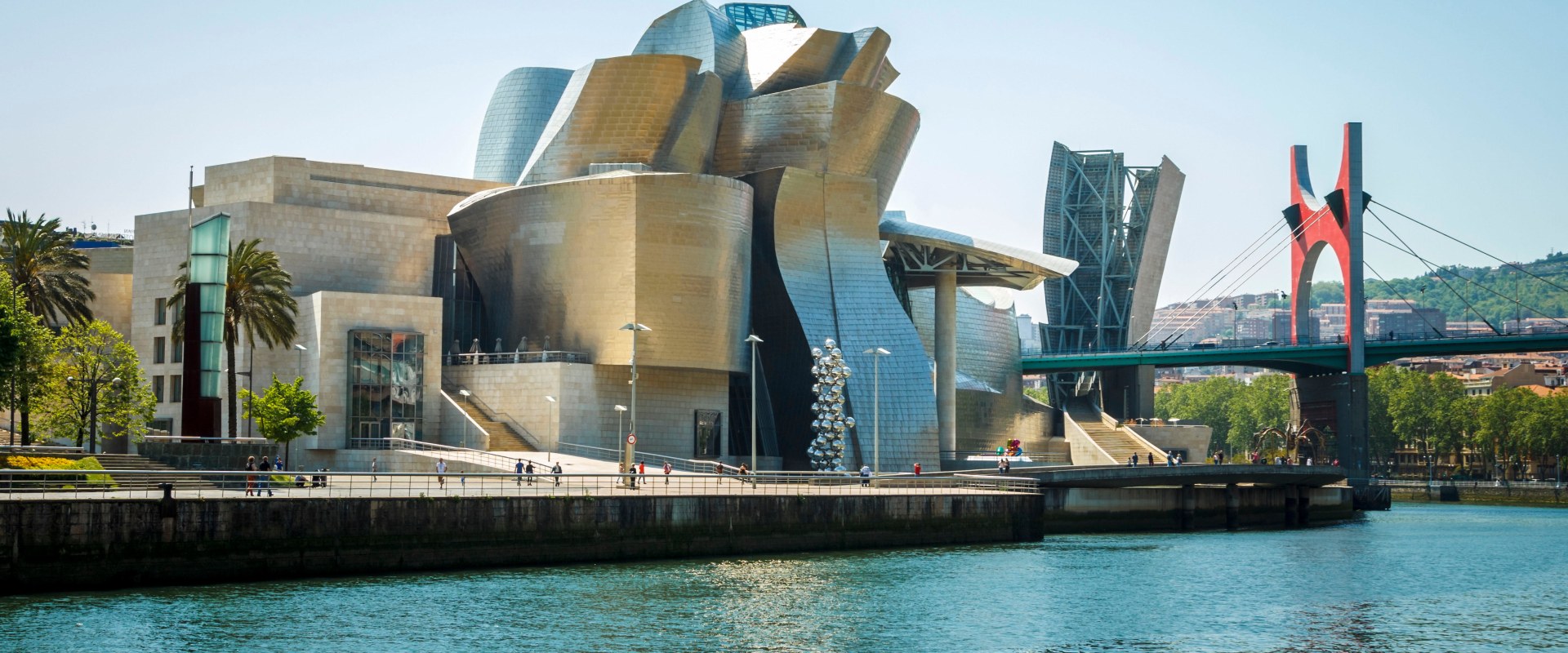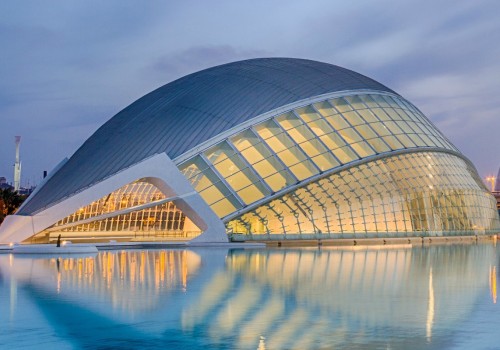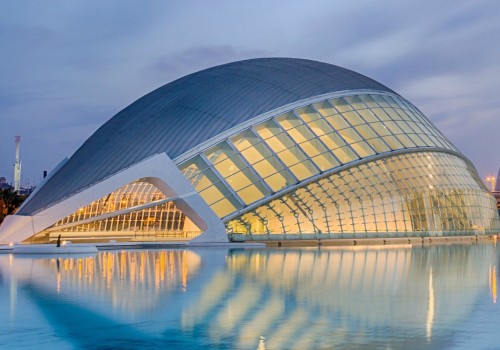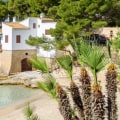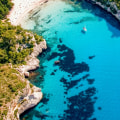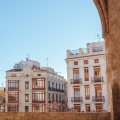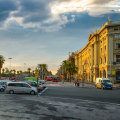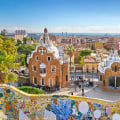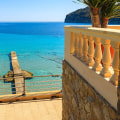Sagrada Familia and Gaudi places in Barcelona. The Great Mosque of Cordoba (Mosque). The Prado and the Paseo del Artes, Madrid. No visit to Madrid is complete without visiting the three main museums in the city.
The Prado Museum (officially called the Museo Nacional del Prado) displays what was once the royal collection of Spanish art, while the nearby Reina Sofia Museum showcases modern masterpieces such as Picasso's moving Guernica. In addition, the nearby Thyssen-Bornemisza Museum combines Old Masters with the best of contemporary art. Madrid is also a classic European city for walking, full of green spaces to enjoy, such as the Buen Retiro Park, as well as wide pedestrian boulevards, such as the iconic Gran Vía. Food culture thrives here too, from casual tapas-tasting cuisine to cutting-edge Michelin-starred molecular gastronomy.
The second largest city in Spain offers a completely different travel experience than in Madrid. Its coastal location gives it a more resort-like feel, with a warm and sunny climate to enjoy most days of the year. It is on the northeastern coast of the country, next to the Mediterranean Sea, and it also seems to have a much more modern and progressive atmosphere than Madrid and other Spanish cities. Barcelona's must-see tourist attractions include the city's immense (and perpetually unfinished) modern Sagrada Familia cathedral and the Joan Miro museum, conceived by the iconic artist himself before his death.
Other good places to see in Barcelona include the city's nearly three miles of beaches and La Rambla, a huge tree-lined and pedestrian-only street. It's where it seems that the whole city goes for a walk. This tourist city is located on the north coast of Spain, in the Basque region. San Sebastian is right on the picturesque Bay of Biscay, which opens onto the Atlantic Ocean.
It is a popular surf town, with a great surf scene in Zurriola Beach. A visit also provides an opportunity to experience the unique Basque culture. Valencia is a port city with a long connection with the sea and with Spain's trade with the world, especially with Europe, the Middle East and Africa. It is in the Mediterranean Sea, on the southeast coast of the country.
As a coastal city, there are some nice beaches to enjoy. Another outdoor spot to see is Parque de la Albufera, a wetland reserve next to the beach with lots of hiking trails (and some good beaches). The Museum of Fine Arts (Museu de Belle Arts de Valencia) stands out, with its excellent collection of Spanish masters by artists such as El Greco and Goya. There is also a large Gothic-style cathedral in the medieval center of the old city, along with remains of the ancient city walls.
When you're hungry, head to the city's Central Market, a huge Art Nouveau market (built in 191) filled with food vendors and cafes (along with souvenir shops and other tourist-type businesses). Although it's a popular tourist attraction, you'll also be surrounded by locals, as this is where they go to eat and hang out. Granada, home to the spectacular Moorish fortress and palace on the top of a hill in the Alhambra, is another vibrant destination in the southern region of Andalusia. It has more incredible examples of Islamic architecture, including the Alhambra castle complex.
There is a whole preserved area of the Moorish old town called El Albaicín, with narrow streets and most of the buildings dating back to the 8th, 9th and 10th centuries. It is a great tourist destination, since you can experience ancient and modern Spain in the same place. There is a large university in Granada and a thriving modern cultural world, with delicious food, places to go for tapas and flamenco music and dancing. Real Spain is represented here with an ornate 16th-century cathedral, which houses the tombs of King Ferdinand and Queen Isabel, who united the country (and sponsored Christopher Columbus's discovery trips).
One of the best holiday spots in Spain for couples is the tourist island of Ibiza. It's a short flight or ferry ride of five to six hours and it's about 100 miles off the Spanish coast. Ibiza is the largest of the Balearic Islands, a group of mainly tourist islands in the Mediterranean Sea. The other three larger islands, Mallorca, Menorca and Formentera, are also popular places to see in Spain.
This ancient city in the Andalusian region, in southern Spain, allows you to explore the history of Spain, which dates back several thousand years, when it was part of the Roman Empire. Cordoba was an important Roman city (called Corduba), and there are still many preserved Roman ruins and sites, including a 16-arch bridge over the Guadalquivir River. Islamic history and culture are especially rich here, as the city was the capital of the ruling Moorish dynasty for most of the time it was under its control. It also flourished during Spain's Golden Age, between the 15th and 18th centuries, when it was the only port that was allowed to officially receive trade from the Spanish colonies in the Americas.
This city in northern Spain is the capital of the Basque region, which may look like a different country. It is part of Spain but is officially considered an autonomous community. The language (also called Basque) here is different from other parts of Spain, as is food, music and culture in general. The opening in 1997 of the incredible curvy, titanium-clad Guggenheim Museum designed by Frank Gehry really put this ancient industrial port city on the map of world tourism as a must-see spot in Spain.
Another great holiday spot in Spain is the stunning Costa Brava area of Catalonia. It is located on the north coast of the Mediterranean of the country, north of Barcelona, extending to the border with France. It is full of small beaches, rugged cliffs and many small coves, bays and coves. The most popular tourist towns on the Costa Brava include Blanes, Tossa de Mar and Lloret de Mar.
Take a day to explore (and snorkel) in the uninhabited Medes Islands, just a short boat ride away. The Spanish city of Segovia is located in the center of Spain, northwest of Madrid. The area is rich in Roman ruins and was also a key city in the post-medieval period of royal rule. There is a Gothic cathedral (with a fascinating museum of religious art) located in the Plaza Mayor of the city.
The Plaza Mayor area is a paradise for food lovers, as it is full of restaurants, cafes and places to have tapas. Sights in Segovia include the fortress and castle of the Alcázar Moro, which was believed to have been an inspiration for Walt Disney when he created Cinderella Castle for its theme parks. Other must-see attractions include the city's incredible two-story ancient Roman aqueduct and the city's massive 16th-century Gothic cathedral. The Museum of the Andrés Segovia Foundation, housed in a restored 17th century palace, shows the life of Segovia, allowing visitors to see its music, instruments and other personal belongings.
The museum also contains a crypt with the tomb of the Master. Pamplona is a city in Navarra, famous for its San Fermín festival that is held every year from 6 to 14 July. At the heart of the festival is El Encierro, el encierro, an activity that consists of running in front of a dozen bulls that have been released, on a tour of the streets of the city. Protected from strong winds by steep cliffs and islands, many say that La Concha, in San Sebastián, is one of the best urban beaches in Europe, let alone in Spain.
Here you can surf, stroll along the promenade in search of good restaurants and enjoy the beautiful views of the beach. The Aqueduct of Segovia is one of the best preserved monuments left by the Romans in Spain. The old aqueduct carries water 16 km (10 miles) from the Frio River to Segovia and was built with about 24,000 solid granite blocks without the use of mortar. Probably built around 50 AD, it still provided water to the city in the 20th century.
Located between Madrid and Valencia, Cuenca is a wonderful example of a medieval city, built on the steep slopes of a mountain. The numerous “hanging houses” are built to the edge of the cliff, making Cuenca one of the most striking cities in Spain, a jewel in the province of Castilla La Mancha. Ibiza is one of the Balearic Islands in the Mediterranean Sea, off the coast of Spain. The island is one of the most popular party destinations in all of Europe.
During the summer, the island's population doubles as tourists flock to Ibiza to enjoy nightclubs, beach bars and restaurants. Located in the foothills of the Sierra de Guadarrama, El Escorial was the political center of the Spanish empire under King Philip II. Philip named Juan Bautista de Toledo an architect in 1559 and together they designed El Escorial as a monument to the role of Spain as the center of the Christian world. Nowadays it works as a monastery, royal palace, museum and school.
Part fortress, part palace and part garden, the Alhambra is situated on a plateau overlooking the city of Granada, in southern Spain. The palace was built in the 14th century by the Nasrid sultans. The Alhambra is now one of the main tourist attractions in Spain and many visitors come to Granada just to see the Alhambra. There is never a day when the Prado Museum is not full of gawking tourists.
This museum houses the largest collection of Spanish and European art, of impressive medieval works from the 12th century and avant-garde movements. Works by artists such as Goya, Raphael, Rubens and Velázquez can be found here. The Gothic architecture of Cuenca Cathedral is one of the main attractions in Spain. Originally built in the 12th century, this attractive monument houses the precious remains of the founding bishops and members of the Montemayor family.
Tourists visit this cathedral to see the 18th century altar, the Renaissance-style arch of Arco de Jamete and the intricate carved wooden ceiling. The church also hosts art exhibitions and other private events. When visiting Cuenca, it's hard to miss this cathedral because it's conveniently located in the central Plaza Mayor. High on Barcelona's skyline is the historic Sagrada Familia, designed by Catalan architect Antoni Gaudí.
The construction of this Roman Catholic church began in 1882 and is one of Gaudí's most famous works. The basilica can accommodate about 14,000 people inside and is 170 meters high. The medieval fortress located on a plateau is the Alhambra Palace itself in Granada. Built in the 14th century by Nasrid sultans, this infrastructure represented Spanish civilization in the Middle Ages.
Construction of the palace began in 712 and continued after the conquest of King Peter in the 1300 century. In addition to the exterior, the rooms and living rooms are impressive, with neo-Moorish details throughout. The garden is also a must see, nestled in fragrant orange and lemon trees. It is only in Barcelona that tourists can find a Gaudí public park of more than 17 hectares in size.
Famous for its glamorous terrace, iconic entrance and curved stone columns, this museum showcases some of Gaudí's works. The museum houses the iconic dragon staircase, the hypostyle room, the Austria gardens and the portico of the laundry room. Perfect for a walk in the open air, Park Güell receives an annual tourist count of around 12 million, who come here for the architectural wonder. The lush environment combined with unconventional infrastructure, this public park is considered a work of art.
UNESCO added Park Güell as a World Heritage Site in 1984, which served as one of the cultural assets existing today. What is Spain famous for? 10 best-known things in Spain. Although it is busy in summer, even along the coast of the large tourist coasts, you can easily find some nice beaches. Often considered one of the most beautiful buildings in the world, La Sagrada Familia is a must-see attraction for anyone visiting Barcelona.
El Teide, Tenerife, is a mountain range with a volcano, which acts as a central point of attraction. Among its many attractions is the incredible gastronomy offered, which is high on the agenda, since San Sebastián has the largest number of Michelin-starred restaurants in a city. The outstanding Basilica of the Sagrada Familia, located in the city of Barcelona, is still the most visited attraction in Spain and is arguably the best place to visit in Spain. The main attractions within the Alhambra Palace to visit include the Patio de los Leones, the royal mansion and the exquisite Alcazaba.
Tourists and locals alike flock to Retiro in good weather to escape the hot sun, either in the shade or to sunbathe. Trekking, horseback riding and cycling are just a few of the activities that attract visitors to the beautiful nature park. Considered one of the “12 treasures of Spain”, Ciutat de les Arts i les Ciències is one of the main attractions in Valencia. This is a magnificent unfinished Catholic church in Barcelona, which is also one of the main tourist attractions in Spain.
The last thing you want is to miss the opportunity to see the buildings or attractions that you are passionate about because there are a lot of people and the attractions are at their best. . .
